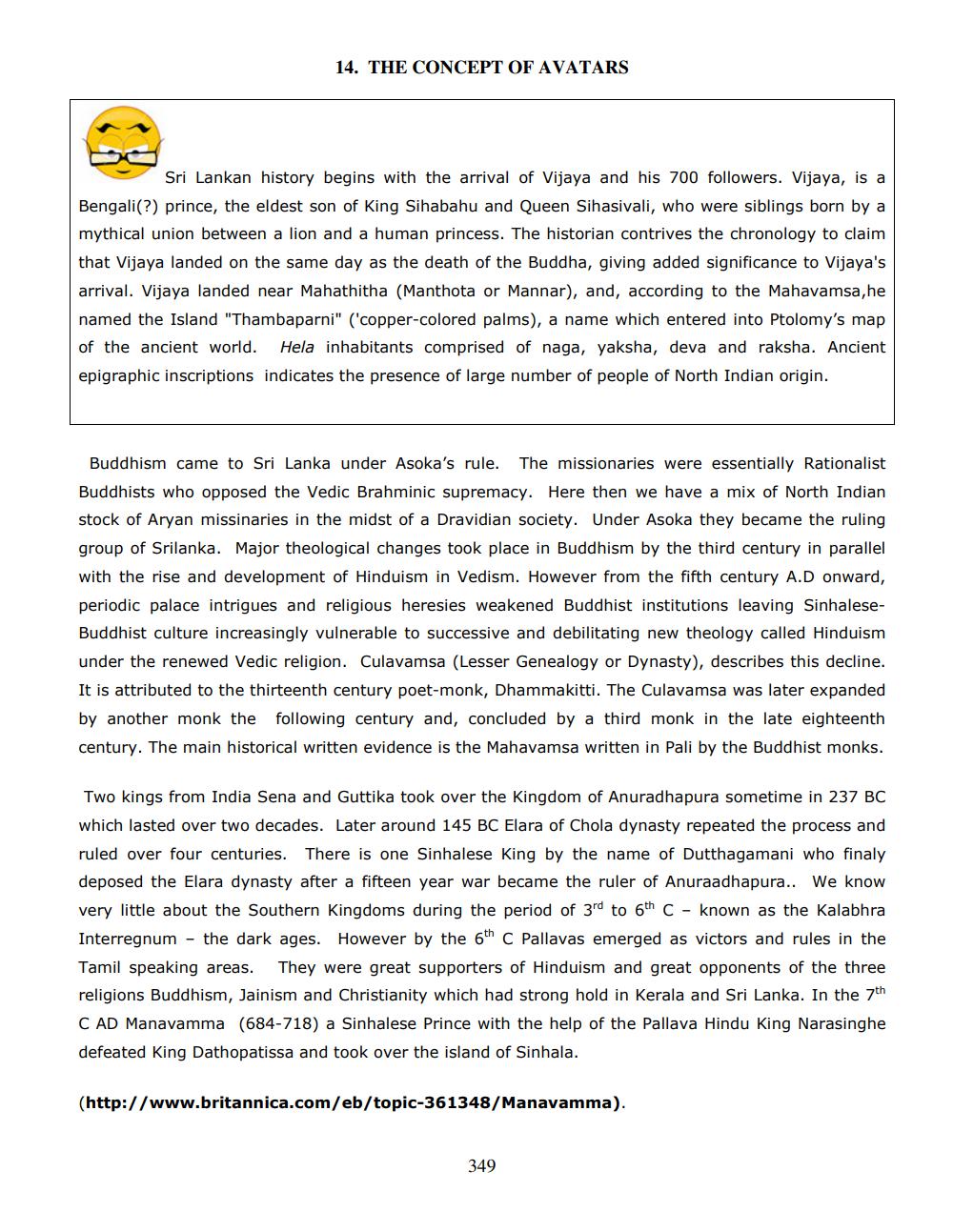________________
14. THE CONCEPT OF AVATARS
Sri Lankan history begins with the arrival of Vijaya and his 700 followers. Vijaya, is a Bengali(?) prince, the eldest son of King Sihabahu and Queen Sihasivali, who were siblings born by a mythical union between a lion and a human princess. The historian contrives the chronology to claim that Vijaya landed on the same day as the death of the Buddha, giving added significance to Vijaya's arrival. Vijaya landed near Mahathitha (Manthota or Mannar), and, according to the Mahavamsa,he named the Island "Thambaparni" ('copper-colored palms), a name which entered into Ptolomy's map of the ancient world. Hela inhabitants comprised of naga, yaksha, deva and raksha. Ancient epigraphic inscriptions indicates the presence of large number of people of North Indian origin.
Buddhism came to Sri Lanka under Asoka's rule. The missionaries were essentially Rationalist Buddhists who opposed the Vedic Brahminic supremacy. Here then we have a mix of North Indian stock of Aryan missinaries in the midst of a Dravidian society. Under Asoka they became the ruling group of Srilanka. Major theological changes took place in Buddhism by the third century in parallel with the rise and development of Hinduism in Vedism. However from the fifth century A.D onward, periodic palace intrigues and religious heresies weakened Buddhist institutions leaving SinhaleseBuddhist culture increasingly vulnerable to successive and debilitating new theology called Hinduism under the renewed Vedic religion. Culavamsa (Lesser Genealogy or Dynasty), describes this decline. It is attributed to the thirteenth century poet-monk, Dhammakitti. The Culavamsa was later expanded by another monk the following century and, concluded by a third monk in the late eighteenth century. The main historical written evidence is the Mahavamsa written in Pali by the Buddhist monks.
Two kings from India Sena and Guttika took over the Kingdom of Anuradhapura sometime in 237 BC which lasted over two decades. Later around 145 BC Elara of Chola dynasty repeated the process and ruled over four centuries. There is one Sinhalese King by the name of Dutthagamani who finaly deposed the Elara dynasty after a fifteen year war became the ruler of Anuraadhapura.. We know very little about the Southern Kingdoms during the period of 3rd to 6th C-known as the Kalabhra Interregnum - the dark ages. However by the 6th C Pallavas emerged as victors and rules in the Tamil speaking areas. They were great supporters of Hinduism and great opponents of the three religions Buddhism, Jainism and Christianity which had strong hold in Kerala and Sri Lanka. In the 7th CAD Manavamma (684-718) a Sinhalese Prince with the help of the Pallava Hindu King Narasinghe defeated King Dathopatissa and took over the island of Sinhala.
(http://www.britannica.com/eb/topic-361348/Manavamma).
349




